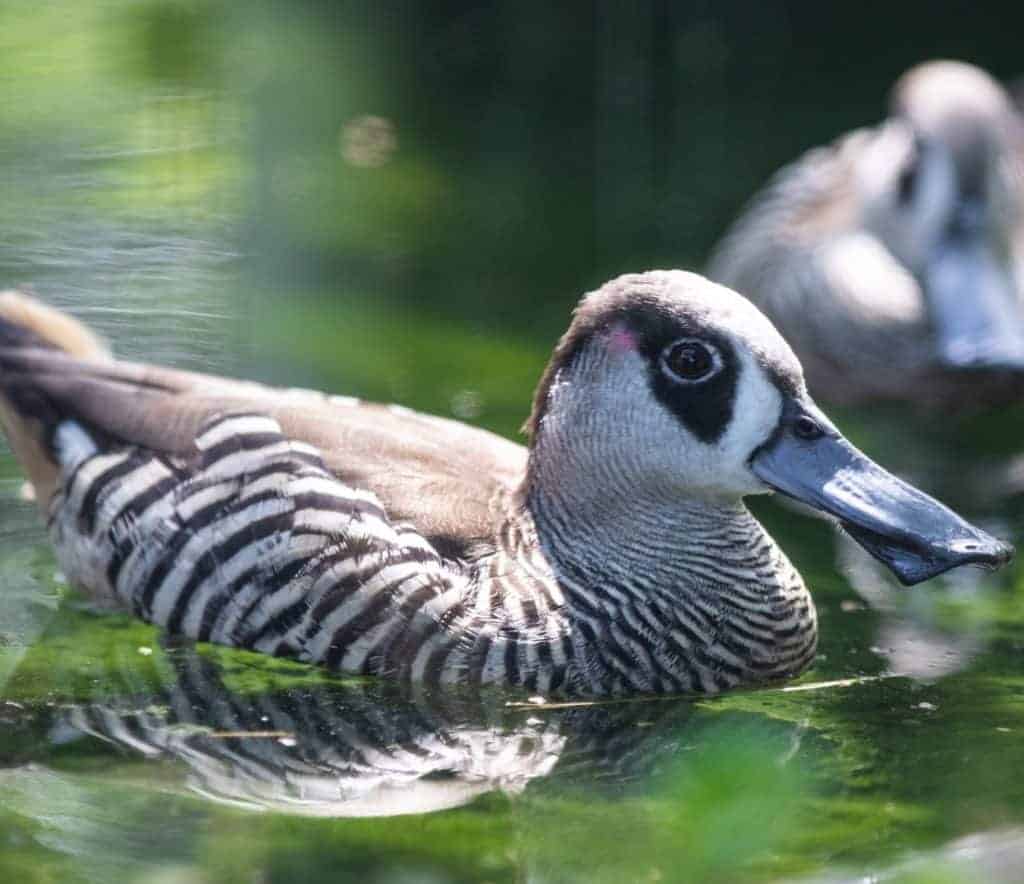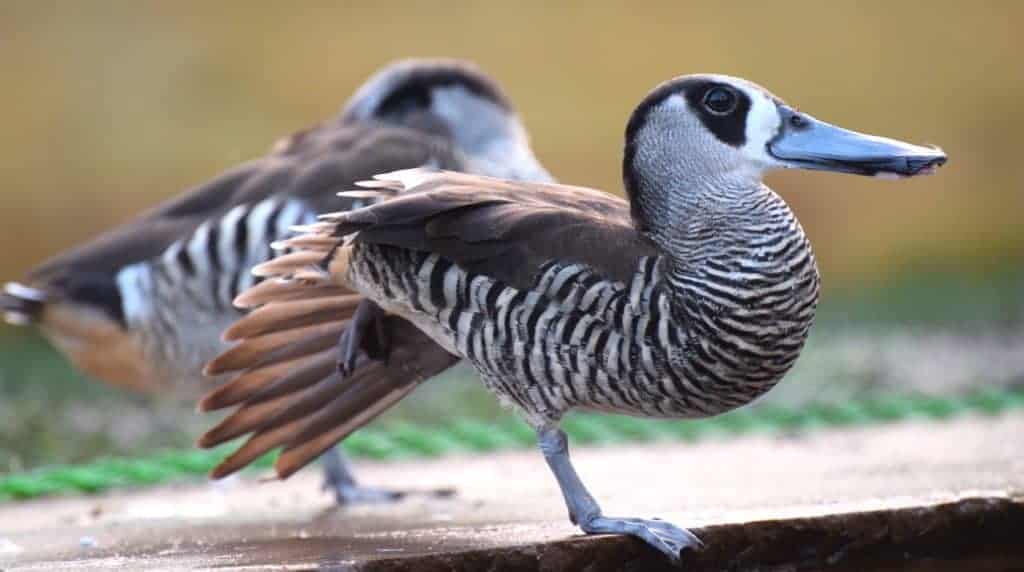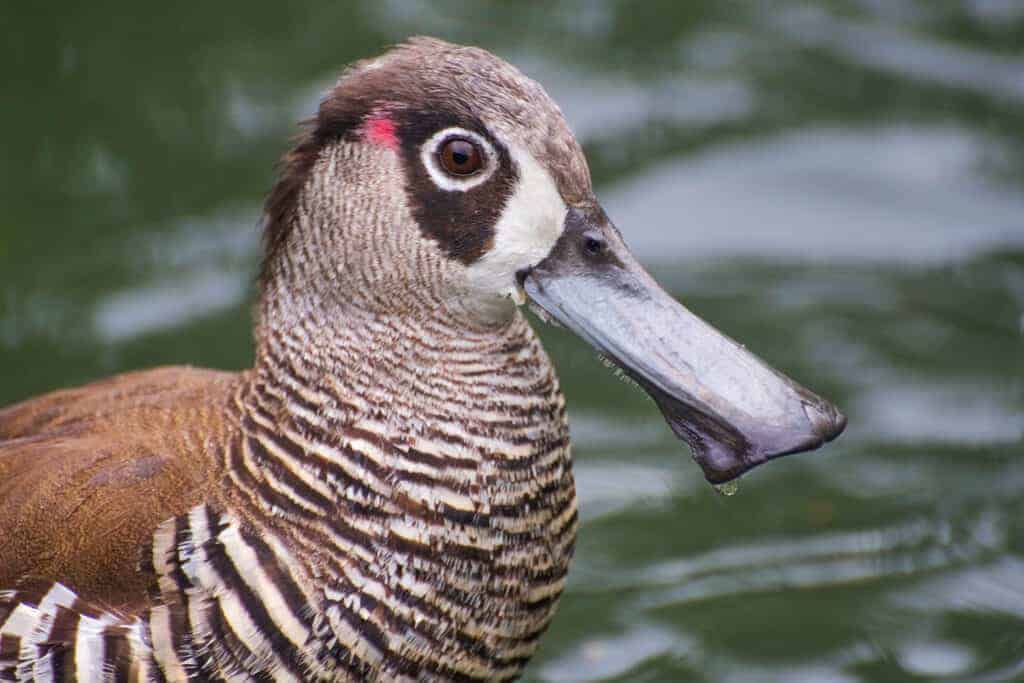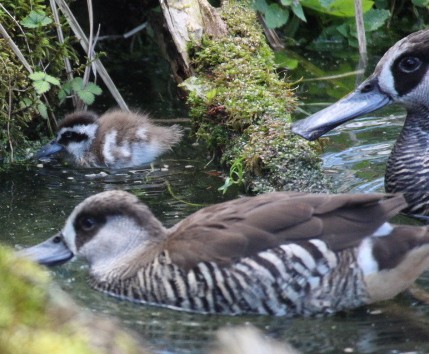Pink-eared Duck

Pink-eared Ducks are widely distributed across Australia, moving territory to find any area of standing water when it occurs. They sometimes take over nests from other birds or they might use hollow stumps and logs. They will utiise an open-fronted nest box.

Malacorhynchus membranaceus
This unusual small duck from Australia takes its name from a small patch of vibrant pink just above the ear, but that patch is only present when the bird is in nuptial plumage. This species is the only member of the order Anseriformes known to have carotenoid pigments in its feathers.

The membranes hanging from the bill and fine lamellae assist with their feeding method; they are filter feeders, straining small invertebrate matter from the water. Pairs or groups may be seen gathered in a slowly turning circle on the water. The vortex generated groups their prey.
Although gathering in groups to feed in the wild, Pink-eared Ducks are generally quarrelsome in collections. They are easily stressed if handled and ducklings are very hard to get going if hatched artificially. They will cope with cold conditions only if open water is maintained.

Breeding can happen at any time of year in the wild, more commonly in the spring in the Northern Hemisphere captive birds. In waterfowl collections, Pink-eared Ducks are not common, though some experienced breeders do have success. Laying 6-8 creamy white eggs, the duck incubates for about 26 days whilst the drake defends the nest. Both parents brood the young. In the wild, dump nesting is sometimes seen. They are thought to form life-long pair-bonds.
Share this page